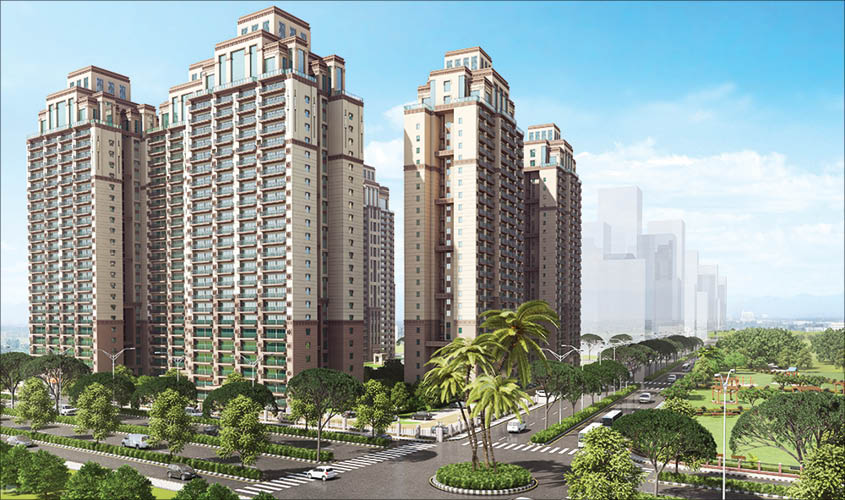Property rates in any area respond positively to infrastructural development. That’s why the Delhi-NCR belt, with its growing highway network and increased Metro connectivity, is likely to witness a real-estate boom.
Improved connectivity due to the rapidly growing infrastructure in Delhi and NCR is all set expand the real estate sector in a big way. In 2019, the real estate sector in Delhi’s neighbouring cities—Noida, Ghaziabad, Gurugram and Faridabad—is going to witness a major surge through the expansion of the Delhi Metro and the opening up of several expressways.
Even though the real estate sector in India has witnessed a slowdown in recent times, properties in Delhi-NCR continue to witness interest from buyers, in anticipation of price corrections and owing to demand from the growing migrant population who seek accommodation. Delhi-NCR, hence, continues to be attractive for end-users and investors. According to experts, the housing supply in Delhi over the last two years, has been fairly low, as compared to Gurugram or Noida. This is essentially due to the demand-supply mismatch. There is massive demand for affordable housing in the city, while property prices in most micro-markets have skyrocketed.
Experts believe that this rise in demand will also yield great dividends to investors. With its vast area and the presence of well-established services, manufacturing and automobile sectors, the National Capital Region’s (NCR) massive employment generation, will result in very high demand for affordable housing.
This will further result in the expansion of real estate in some affordable hotspots for housing projects. Some of the key hotspots for affordable housing in the NCR area include Sohna, Bhiwadi, Yamuna Expressway, Greater Noida West and Raj Nagar Extension.
Better connectivity, with the expansion of the Delhi Metro and Gurugram’s Rapid Metro, has attracted prospective home buyers to this region and played a major role in the growth of the city, realtors said.
“Rapidly growing infrastructure projects surrounding Gurugram, Noida and Ghaziabad that offer quality construction and latest lifestyle amenities and proximity to social infrastructure, will continue to act as drivers for demand. Locations such as Dwarka Expressway and the eastern and western peripheral expressway are growing in demand,” said a leading realtor in NCR.
Besides the metro, other infrastructure developments like flyovers, underpasses etc. in and around Delhi also augur well for the new destinations in the NCR. With road connectivity improving, with the opening up of the 11-km elevated road that connects Raj Nagar extension with NH-24 and the Meerut Expressway, investments from areas like Meerut, Moradabad, Hapur and Bulandshahar are likely to increase. With completion of the Meerut Expressway in 2019-2020, these areas in western UP are set to become hotspots for housing and commercial projects.
The upcoming KMP (Kundli-Manesar-Palwal) Expressway will boost areas like Neharpar in Faridabad and Palwal.
Experts said that in the next couple of years, Ghaziabad and the stretch along the NH-24, will become excellent options for investment. In addition to the availability of good infrastructure and basic facilities in the vicinity, connectivity is a major deciding factor while buying a property. The area has great road connectivity and the Eastern Peripheral Expressway is also poised to help in the overall development of the area. With the Ghaziabad metro line too starting shortly, this region will emerge as a promising new investment destination in the NCR.

Moreover, the real estate market is finally settling, after the implementation of the Real Estate (Regulation and Development) Act (RERA) and the Goods and Services Tax (GST). Consequently, the overall sentiment, vis-à-vis investment in the Delhi-NCR region, is inching towards the positive. Key infrastructure upgrades, like widening of the NH-8, opening of the Eastern Peripheral Road, expansion of Sohna Road and wider metro connectivity, along with a focus on affordable housing, are expected to provide the much-needed fillip to the realty sector in Delhi-NCR.
Real Estate experts said the ever-growing Delhi Metro network will have a huge impact on the outskirts of city. A large part of the stretch, where the Delhi Metro extension will reach, comprises households from the middle- to upper-income segments and with the commencement of operations, accessibility will improve. Even though supply constraints exist and demand in the property market remains sluggish, the Metro line will escalate rental values in these areas. Redevelopment of properties is on the rise, especially along these stretches. Capital values, however, may not move up substantially, as the same would have already been captured.
However, this will also lead to increase in the existing property prices and efforts to extract more potential from individual land parcels, in terms of greater FAR and hence, more saleable area. Also, there will be opportunities for various types of real estate, like mix-use complexes, multi-level car parking facilities, serviced apartments etc.
2019 is going to be a bright year for both the developers and homebuyers, as mid-market and affordable housing will be a huge opportunity to invest in. Home-buyers’ sentiment will shift towards properties with compelling prices over luxurious spaces because of the additional charges that luxury properties come with. Hence, properties consisting of amenities and features of a premium project, which are also affordable to a larger segment of the population, will be in huge demand.
The real estate firms, since long, have been hearing about the rise of the millennials, signifying a demographic shift in the market. However, the impact has not yet been seen. 2019 is expected to be the year when this scenario would change. Estimates peg that India will have 410 million millennials, who will spend $330 billion annually, by 2020. Also, the preferences and the needs of millennial buyers, like residential projects with basic amenities, urban connectivity, and public infrastructure in a liberal neighbourhood, are likely to have a healthy traction in the real-estate market in the upcoming years.

